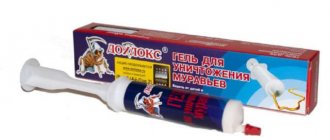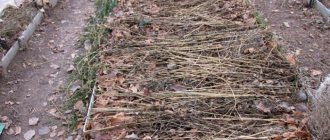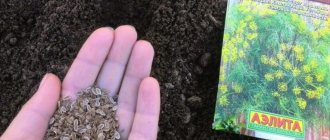Geranium is loved by gardeners for its undemanding nature when it comes to watering and soil composition. The aroma of essential oil emanating from its leaves effectively repels insects. The only thing this flower needs for full development and maintenance of decorativeness is pruning. Without its implementation, the bare shoots are greatly elongated, and the number of inflorescences is significantly reduced - in this form the plant seems neglected and stunted.
Flower growers specializing in geraniums advise carrying out mandatory annual autumn pruning of the plant in order to stimulate the growth of lateral branches and abundant flowering in the next season.
Why prune geraniums - purpose and timing of the procedure
There are many types and varieties: garden and indoor flowers - pelargoniums, ampelous and bush geraniums, plants with climbing or erect shoots. In addition, there is a huge variety of color and splendor of inflorescences. And each of them needs formative pruning, the purpose of which, first of all, is to create a dense bush and stimulate lush flowering.
Without outside intervention, geranium never sends out additional lateral shoots - this is its peculiarity. At each node there are growth buds, but they are all in a state of rest. In order to make the plant look like a lush bush, it is necessary to provoke the development of branches and thickening of the green part of the flower.
The formation of geraniums should be carried out on a regular basis, and it is recommended to begin this process immediately after purchasing or propagating a flower and transplanting it into a permanent pot.
The stems of the plant should not be allowed to become excessively elongated and exposed. If this happens, there are only 2 options left:
- Or completely trim the bush in the fall after flowering and root the cut cuttings in order to obtain new young plants.
- Or cut off the stems of the flower, leaving only the strongest and healthiest one, from which all lower side shoots should be removed. The stem can be shortened a little, and then, after some time, the geranium will form like a small tree on a thick trunk. A stem that is too tall needs to be pruned, removing part of the top, then with the development of lateral buds, the crop will turn into a small tree on the trunk. It looks incredible when in bloom.
The timing for pruning geraniums is early spring and autumn. Moreover, a heavily pruned geranium in the spring may not have time to regain its strength for flowering, so all manipulations associated with stress for the plant should be carried out as early as possible - around the end of February - beginning of March . Considering that pinching is a less traumatic procedure, in the spring, if there is no urgent need for pruning, you can stop at it.
Winter pruning is carried out immediately after autumn flowering, when the last petals have fallen from the plant. If geranium is planted in open ground in the summer or constantly grows in a garden bed, then in the fall its stem is cut exactly in half - this significantly improves air exchange in the crown, the lower leaves become accessible to the sun's rays.
Transplanting pelargonium
Replanting greatly affects the health of the flower. It is best to carry it out in early spring. This procedure is most often performed to increase space for the flower. Thus, a pot with a diameter of 1.5-2 cm larger than the previous one is better suited for replanting. Planting pelargonium requires care and attention, so you should be careful.
Important! Expanded clay should be placed at the bottom of the new pot so that excess moisture does not remain but evaporates.
Homemade ampelous pelargonium is becoming one of the favorite flowers for housewives not only because it blooms very beautifully, but also because it is undemanding in care. In order for the flower to always remain lush and beautiful, you just need to be careful and follow simple but important rules for geraniums.
Features of different types of geraniums
Most often, the geranium itself will correctly and promptly tell you whether it needs pruning. If the bush looks compact and the stem is not bare, then you can do without autumn pruning. Thus, ampelous pelargonium is characterized by long shoots, but they are good when they are completely covered with leaves and decorated with flowers. When a plant begins to display an uncovered trunk, it communicates the need for formative measures - cutting or pinching.
There is also such an interesting variety as mini-pelargonium. This is a miniature plant that needs pruning to a lesser extent than its tall counterparts, having a rather compact structure. But the royal geranium, on the contrary, is very prone to overgrowth, so in the fall it is radically cut off, leaving only a small shoot with buds.
Crown formation in winter
The winter months are a dormant time for geraniums. Short daylight hours and lack of solar energy send this indoor flower into hibernation.
- does not bloom;
- does not give active growth;
- does not form new shoots.
As a rule, there is no need for pruning in winter. During this period, you need to monitor the condition of the geranium. Particular attention should be paid to shoots that were pruned in the fall. If the cut areas begin to turn black or rot, then the affected area should be cut off.
If the need arises, the time for the main pruning can be postponed to the second half of February. However, if possible, it is better to postpone this procedure until March.
Before the onset of winter, it is recommended to tame all shoots by at least 1/3. This allows you to activate kidneys that are in an inactive state. This procedure has a beneficial effect on the formation of geraniums.
Rules and step-by-step guide for autumn pruning
The basic rules for pruning are not original. It is necessary to prepare and disinfect instruments. For such a procedure you will need a sharp stationery or kitchen knife. You can also replace it with an ordinary blade. Scissors are not suitable for this purpose - in the process they severely squeeze the shoots and stem, which is unacceptable. Disinfection is carried out by boiling the blade, heating it over a fire flame, or wiping it with an alcohol solution.
When half or more of a bush is removed, pruning is carried out in several courses with an interval of 2 weeks. If the plant was planted in open ground during the summer season or the flower pot with geranium was constantly in the garden, then the cutting should be postponed for 4-6 days so that the flower gets used to the new growing conditions.
When starting work, it is advisable to follow the steps:
- The first step is to remove all yellowed leaves, wilted inflorescences and damaged parts of the plant - this way the true shape of the bush will become visible, from which you can proceed in the future.
- Next, after carefully examining the geranium, you need to think about the desired result of the shaping.
- Before wintering, branches that intersect each other are shortened or pruned, and weakened shoots are cut off. It is important to make cuts only above the leaf node, 5 millimeters from it.
- Then, when the bush is thinned out, the tips of the remaining shoots and branches are cut in accordance with the planned shape. All tops are shortened by several nodes at an acute angle to stimulate the development of peduncles.
Description of the plant
Geranium is an ornamental herbaceous plant belonging to the genus Geraniaceae of the same name. The African continent is considered to be the birthplace of this flower. Today, about 300 varieties of geranium are found in the wild, in both temperate and tropical regions, and even at mountainous heights.
Find out also about other varieties of geranium: zonal pelargonium, royal geranium, ivy geranium.
This is a small flower, up to 60 cm in height. The root system of geraniums is branched, and at the ends of the roots there are special thickenings, which during drought play the role of a storage tank. The stem of the representatives of the genus is highly branched into separate shoots, forming a kind of bush.
Depending on the subspecies of the flower, the shape of its leaves can vary greatly. The most common specimens are those with a whole, cut or slightly incised leaf blade, but the leaf can also be divided into 3–5 parts. Light greenish or grayish hair may be observed on top of the leaf.
Geranium flowers are often large, solitary, or collected in racemose inflorescences of 3–5 pieces. The most common flowers are purple, white, blue and violet. Depending on the variety, geraniums can bloom from early May to late August. After this, fruit boxes are formed on the plant, in which numerous seeds ripen.
Did you know? Geranium has bactericidal properties. During its life, the flower releases specific substances into the air that inhibit the development of pathogenic microorganisms.
What will recovery care be like?
Caring for geraniums includes regular pruning, established watering schedules, and seasonal feeding. However, plants pruned before winter require a little more attention than usual. At the end of the event, it is important to disinfect all sections formed during the process using activated carbon to avoid infection. Also good remedies for this purpose are wood ash or cinnamon powder; they are excellent antiseptics.
To make it easier for the plant to cope with the stress caused to it, it is recommended to feed it with a special vitamin complex for geraniums, purchased at a flower shop. To ensure the splendor of the crown and the rapid development of new leaves, nitrogen fertilizers are added to the soil. The irrigation regime for crops that have undergone pruning should be changed to reduce the amount of moisture and intervals between waterings of up to 3 days.
In winter, it is necessary to pay especially close attention to the condition of large areas of cuts and trim them if they turn black.
The comfortable temperature for keeping geraniums in winter varies from +17–22 during the day and from +13–16 at night. Lighting should be present for 12 hours a day, and if natural conditions are not enough for this, it is recommended to turn on a fluorescent lamp.
How to preserve a plant at home and can it be stored in the basement?
Already in the fall, the pot with the plant is placed in a cool and dimly lit place. A southern or northern window sill in a house/apartment is quite suitable for this, since there is diffused sunlight there. And to make up for the lack of light at this time, you can use fluorescent lamps. The optimal daylight hours are 12 hours.
Such lamps are an excellent solution if it is not possible to place geraniums on the windowsill: you can independently build racks with lamps, thanks to which they can be placed anywhere in the house/apartment. Also, additional lighting guarantees the uniform development of all shoots (when there is insufficient lighting, they begin to stretch).
The frequency of watering and the amount of water for this are gradually reduced, because the plant stores water in its thick stems for the winter. You need to water so that the soil is very slightly moist, and the next watering should be done when the substrate is completely dry.
highly not recommended to fertilize geraniums until the very beginning of March. If the plant suddenly begins to wither, you can add fertilizer, but not more than once every month and a half.
It is better to reduce the temperature to 10 - 12 degrees, so for the winter it is convenient to place the flower on the balcony or in the basement. This temperature regime is observed until the beginning of spring.
Important! Do not overwater the plant, especially at low temperatures. It is for this reason that sudden and rapid rotting of roots often begins. The substrate should also not be allowed to dry out excessively. In this case, the plant will begin to turn yellow, quickly wither and gradually die.
Despite the fact that in the cold season geranium should be in a room where the temperature is extremely low, it does not tolerate cold drafts. Therefore, during any ventilation, the plant should be removed as far as possible from the open window.
Errors that occur during seasonal pruning
Pruning geraniums for the winter at home is a simple process, especially if you do not ignore the advice of experts on how to do it, because the mistakes of beginners can cost the plant its life.
| Common mistakes when pruning | Possible consequences |
| Failure to meet deadlines | Winter pruning is extremely undesirable, and summer pruning can even lead to the fading of the plant and the fall of all the inflorescences. |
| A cut made too high above a knot | Loss of decorativeness after the left upper part of the stem dries to the nearest node |
| Drastic pruning of geraniums | The crop will have a hard time withstanding stress and will not bloom for a long time. |
| Frequent haircut | Slows down the development of flower buds |
Fertilizer application should also be taken under control. Nitrogen can be added after pruning, and when the crown reaches sufficient lushness, the plant needs potassium supplements to a greater extent.











